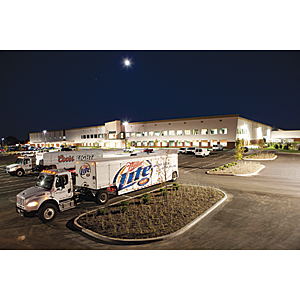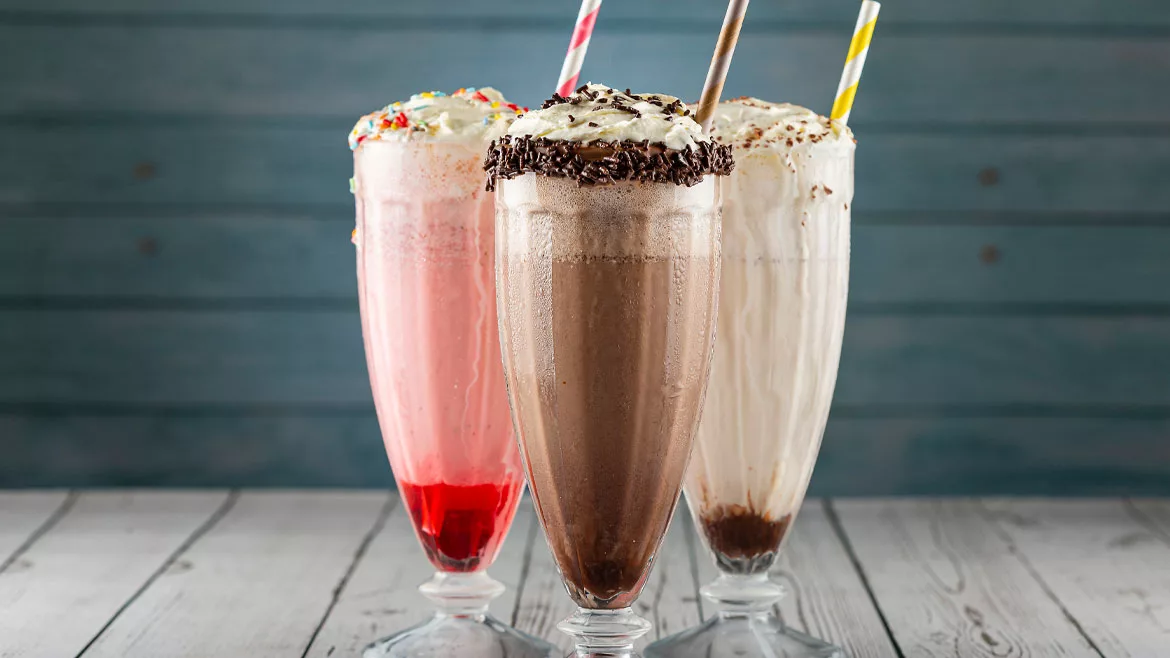Hooking up trucks for profitability
Trailers increase productivity, flexibility
The first decade of the 21st century saw profound change in the beverage industry, with an exponential explosion of product SKUs taking place at the same time

|
as unprecedented levels of bottler and distributor consolidation. Beverage fleet operations were by no means immune to this dramatic shift in operations, whether as a result of those upstream changes or due to the economic condition’s influence on reducing operational costs.
By the close of the decade, two key trends in bev-erage fleet operations had been solidly established: First was the move away from traditional side-load bodies and trailers in favor of end-load equipment, and second was the beginning of a shift from straight trucks to tractor-trailer combinations.
Tractor-trailer combinations are far from “new” in the beverage business, as side-load trailers have long been a popular choice among larger distributors. The more generic cargo-style (dry van) trailers also have found a home serving volume customers such as grocery store and big-box accounts. But as the industry evolves, distributors of all sizes are finding the cargo-style trailers to be the most productive route-delivery option.
The cargo trailers significantly reduce manual product handling and the potential for driver injury by enabling palletized order delivery. Adding a liftgate and a pallet jack to the trailer allows one route to serve dock and ground delivery accounts without manually handling cases. Leading distributors have noted the ability to add multiple stops to each route due to increased driver productivity offered by the cargo trailer configuration.
Many logistical benefits are offered by the tractor-trailer configuration. Key among these are the ease of substituting a rental tractor when a fleet’s own unit suffers downtime as well as the ability to pre-load second-shift route trailers without tying up additional power units.
Once a distributor’s operations are configured for cargo-style trailer operations, it can be easy to address seasonal demand peaks with comparable equipment that is readily available from rental agencies. The tractor-trailers also are more maneuverable than straight trucks with comparable capacity.
Given the ubiquity of cargo-style dry van and refrigerated trailers, a wide variety of configuration options are available. The trailer’s dimensions are one important consideration. While typical over-the-road trailers range from 48 to 53 feet long and up to 13.5 feet high, the long-haul spec’ed units generally are impractical for anything but big-box and grocery accounts.
Shorter “pup” (less than 40 feet long) trailers are best for most route delivery operations, providing a reasonable balance between capacity and maneu-verability. A minimum-length 28-foot unit is one of the most popular “pup” trailer lengths because it allows two trailers to be connected and hauled in a “doubles” configuration, enabling multi-trailer relays to replace cross-dock operations.
Individually, the 28-foot trailers are highly maneuverable not only because of their length but because they also are typically spec’ed with a single axle, which eliminates the “scrub” resistance of tandem-axle configurations in tight turns.
One configuration that has gained some attention is a 33-foot trailer with the axle spacing of a 28-foot trailer to accommodate the installation of a “tuck-away” style liftgate behind the axle. A downside to this configuration is that when the trailer is loaded all the way to the back, cantilever forces can result in improper weight distribution. Trailer manufacturers recommend using rail-type liftgates to avoid interference with proper axle placement.
Better still is a 35-foot tandem-axle trailer, a con-figuration rapidly gaining popularity. Along with the additional cargo space from the added length, the tandem-axle configuration ensures proper weight distribution, especially when a heavily loaded pallet is at the end of the liftgate. The 35-foot tandem-axle trailers also have more than enough weight capacity for full loads of virtually any beverage commodity.
Great Dane, a major manufacturer of dry van and refrigerated cargo trailers, has sold several hundred of the 35-foot tandem-axle trailers to beverage industry clients, spec’ed with rail liftgates and 12.5-foot exterior heights. On most cargo trailers, the standard exterior height is 13.5 feet, but route delivery operations don’t usually involve stacking pallets two-high, so eliminating the extra height reduces cost, weight and wind resistance.
Although cargo-trailers have gained in popularity within the beverage industry, the manufacturers of traditional side-load beverage bodies and trailers are focusing on innovation to meet the needs of the beverage market.
Side-load trailers have grown to 20 bays and beyond with combinations of refrigerated and ambient-temperature space in a single trailer. To address flexibility in loading and delivery operations, bay widths can be spec’ed to accommodate multiple pallet widths, and hybrid trailer configurations offer the ability to load and unload from either side-bay doors or a rear cargo door.
Looking for a reprint of this article?
From high-res PDFs to custom plaques, order your copy today!




